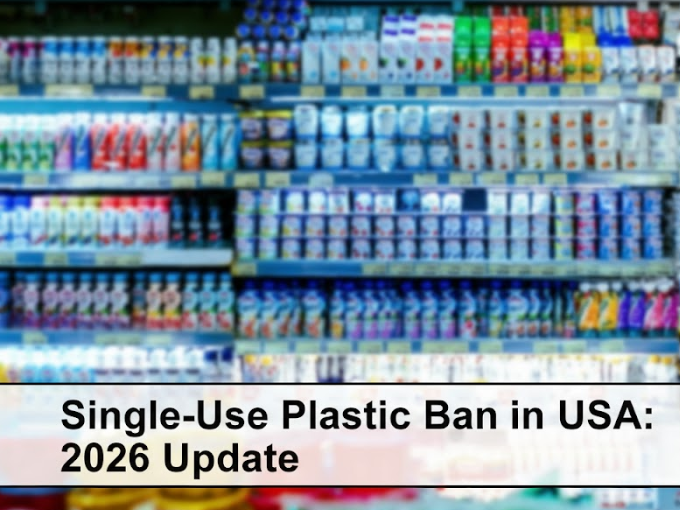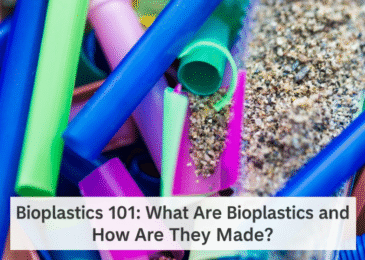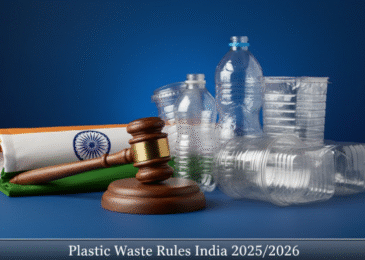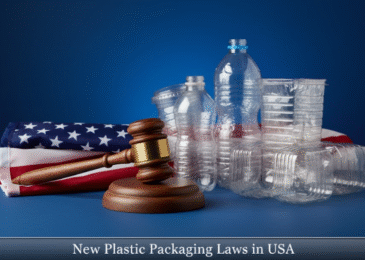Nearly every American uses single-use plastics daily without a second thought.
From the morning coffee run to one’s snack before heading home, disposable plastic is there close by, and soon enough it goes into the bin.
But these items, designed to be tossed after minutes of use, stick around for centuries in landfills.
Less than 10% of plastic ever produced gets recycled, and a staggering 14 million tons end up in our oceans every year (EPA, 2024).
So it’s no longer a distant environmental problem. Recent studies show microplastics have even been found in American tap water and table salt.
Obviously, the role of throwaway plastics needs a rethinking for everyone, from lawmakers to individuals. That’s partly why the USA’s legal landscape of single use plastic bans is changing rapidly.
So, where does the single-use plastic ban in the USA stand in 2026?
How is it working, and what are its challenges?
Let’s get into it right away.
What is the status of single-use plastic bans in the USA?
A cursory look at the single-use plastic ban in the USA reveals two notable points::
- In some states, you can no longer get a plastic bag with your groceries.
- In others, you’ll still get one unless you bring your own.
Even from this tiny detail, we can tell that there is no single national ban on plastic bags or straws in the USA.
Instead, the landscape is a patchwork.
This is shaped by:
State bans
As of 2025, 19 states and territories (like California, New York, Colorado, and Puerto Rico) have banned one or more types of single-use plastics.
For the rest of the states, the situation is tricky with “preemption” laws and rollback bans. Preemption laws actually block cities from making their own plastic rules. This is seen in places like Florida, Texas, Ohio, etc.
Others have tried to roll back bans or create loopholes, such as allowing “thicker” plastic bags labeled as reusable.
Beyond the mainland, all five U.S. territories have also enacted bans: American Samoa, Guam, Northern Mariana Islands, United States Virgin Islands, and Puerto Rico.
City and county rules
Hundreds of cities, from Seattle to New York City, have their own bans or fees. These are often tougher than their state’s rules.
Federal actions
On the federal level, change in political power has made the scenario a bit complex. The Biden administration had committed to:
- Elimination of single-use plastics in federal procurement by 2027 and across all federal operations by 2035 (EPA, 2024).
- Phasing out of plastic bottles and cutlery by 2032 in national parks.
However, the procurement ban on single-use plastic at the federal level hit an abrupt stop in 2025. In February 2025, President Trump signed an Executive Order ending the forced use of paper straws in federal facilities.
Although this has created confusion, it’s important to note that the order primarily affects federal procurement, not state laws.
Also, In May 2025, Interior Secretary Doug Burgum formally rescinded the 2022 Biden-era policy phasing out single-use plastics in national parks.
Recent Development At Federal Level
Despite the stalling of the procurement ban, a proactive step taken up by the federal government promises a better future.
On June 3, 2025, coinciding with World Ocean Day, the U.S. Interior Department took a giant step:
Secretary Deb Haaland signed an order (Secretary’s Order 3407) to begin phasing out single-use plastic products across all federally managed lands.
That means everything from plastic bottles to food containers is slated for removal from national parks and public lands. This covers a staggering 480 million acres nationwide. The complete phase-out target is by 2032.
So now we have an understanding of the legal landscape with the single-use plastic ban in the USA. Next, we will look into the plastic products affected by it.
What products are covered under single-use plastic bans?
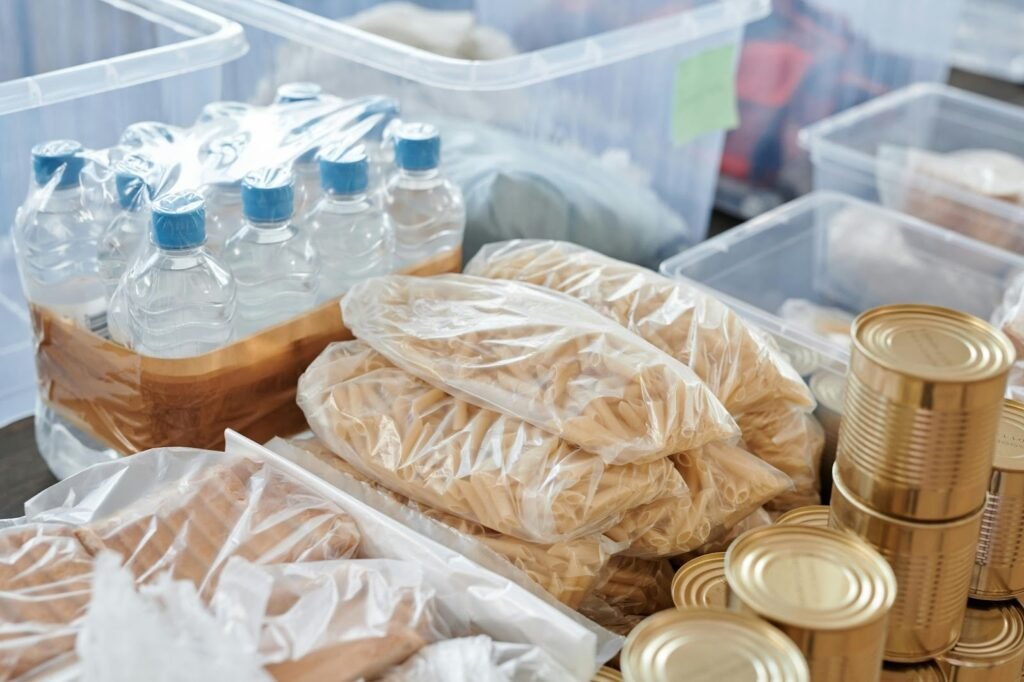
When people hear “plastic ban,” most think of plastic bags.
But in reality, products banned as single-use plastics in the USA cover a much wider list.
Let’s see what is covered in this list.
List of Items
- Bags: Grocery/retail checkout bags (thin and “thicker” variants).
- Straws and stirrers: Usually only given if requested; banned outright in some cities.
- Foam foodware: Takeout containers, cups, and clamshells made from polystyrene (EPS).
- Cutlery and utensils: Forks, knives, spoons, and sometimes stirrers.
- Hotel toiletries: Mini shampoo and conditioner bottles banned in NY and CA hotels.
- Other items: Some cities include plastic cups, condiment packets, and even balloons.
Differences By State/City (Local Nuances)
While the word “ban” sounds simple, the list of covered products changes as you cross state borders. Sometimes even county lines.
As there is no national standard, different rules mean different scopes of banned products.
Some of the notable cases:
- Plastic straws work on a “request basis” rather than on complete prohibition in the states of California, Maine, New Jersey, New York, Oregon, Rhode Island, Vermont, Delaware, and Washington. Some cities go further. E.g., Washington, DC prohibits businesses from providing plastic straws even if the customer requests one. Exceptions are only made for people with disabilities.
- Polystyrene foam has been banned by California, Delaware, Oregon, Rhode Island, and nearly all of Hawaii from food packaging. Maine implemented a similar ban and made a temporary exemption for meat, poultry, fish, seafood, and eggs. This exemption ends on July 1, 2027.
Next, let’s move from what’s on paper to what’s happening in the real world: In reality, how effective are these bans?
How effective are plastic bans?
Policy without results is just paperwork.
So what does the evidence tell us?
How is the US banning single-use plastic in 2025 working out in reality?
The numbers say yes—especially when the bans are well designed and enforced.
What The Data Shows
Successful regions implementing the single-use plastic ban in the USA show common traits:
- They led the way with ambitious plastic bans, and
- Their results have been tracked with care.
Here’s a table to summarize the impact data:
| Region/State | Type of Ban/Policy | Measured Impact |
| California | Statewide bag ban + 10-cent fee | 86% drop in plastic bag use68% less roadside bag litter in 2 years |
| New Jersey | Statewide bag ban (2022) | Eliminated ~6 billion single-use plastic bags/year |
| Philadelphia, PA | City bag ban (2021) | Eliminated ~6 billion bags/year (with New Jersey) |
| Maryland | Foam food container ban | 65% drop in foam waste on beaches (1st year) |
| Coastal U.S. | Local/state bag bans/fees | 25%–47% fewer plastic bags in beach litter |
| New York | Statewide bag ban (2020) | Major reductions in retail plastic bag use reported |
| Vermont | Statewide ban on bags, foam, and straws | Billions of bags avoided (with NJ & Philadelphia) |
| Oregon | Statewide bag ban (2020) | Early data shows a big drop in single-use bag demand. |
Key takeaway: Places that have enacted comprehensive plastic bag bans (often paired with fees on alternatives) are seeing dramatic drops in plastic bag use and litter. It is especially seen in high-impact areas like beaches and roadside cleanup.
Note On Loopholes And Unintended Consequences
The latest updates on the US single-use plastic bans show that while success stories emerged, so did some bumps on the road:
- In places where “thicker” reusable bags were allowed, people often treated them as disposable. So plastic use wasn’t actually averted.
- When paper bags are given for free, their use can spike, which brings its own environmental costs.
The lesson? Bans are most effective when they’re
- broad,
- include a fee on alternatives, and
- are paired with public outreach and strong enforcement.
Next, let’s zero in on the main reasons why plastic bans remain a source of debate and controversy in the USA.
What Are the Challenges and Controversies?
If plastic bans work so well, why isn’t the whole country on board?
The truth is, the road isn’t smooth:
- Preemption laws: We went over this earlier in the article. In states like Florida and Texas, local governments are blocked from passing their own single-use plastic bans, even if residents support them.
- Greenwashing tactics: After California banned thin plastic bags, many stores began offering thicker “reusable” plastic bags for a small fee. But data showed most customers kept treating them as single-use, so overall plastic waste barely dropped (CalRecycle, 2020).
- Legal pushbacks: Businesses sometimes sue to block bans, arguing they add costs or overstep state authority. For example, lawsuits in New York delayed plastic bag ban enforcement for months.
- Weak enforcement: Small shops may ignore new rules, and penalties are often too minor to act as a real deterrent.
- Misleading alternatives: “Compostable” plastics sound promising, but most end up in landfills. Since many U.S. regions lack industrial composting, it can be as damaging as regular plastics.
All these challenges show why, for plastic bans to stick, they need clear rules, strong enforcement, and genuine alternatives. Let’s look into the latter in the next section.
What Are the Opportunities for Investors and Innovators?

While bans present challenges, the same open up opportunities for entrepreneurs and investors.
This is how:
- The U.S. market for compostable, biodegradable, and reusable packaging is expanding fast. In 2023–24, American startups in plastic alternatives raised over $300 million USD in new funding.
- Extended Producer Responsibility (EPR) laws are gaining ground. This prods brands to rethink packaging and invest in circular systems.
- There’s a rising demand for new materials, like hemp-based plastics, seaweed-based wraps, mushroom packaging, and advanced recycling methods.
This is where Ukhi plans to make a difference.
At Ukhi, we turn agricultural residue (crop waste that would otherwise be burned) into high-performance, compostable biopolymers for packaging. Our technology not only replaces petroleum plastics, but also supports rural communities and reduces emissions.
What’s next for plastic policy in the USA?
The USA’s movement to reduce single-use plastic is gaining momentum, but it’s a story still being written.
With more states enacting bans and cities testing new approaches, we’re seeing the first real signs of progress.
We saw this with cleaner shorelines and billions fewer bags in circulation. Recent data shows that the U.S. beach cleanups in 2024 collected nearly 40% fewer plastic bags compared to just a few years ago.
The next phase will demand even more coordination and creativity.
- Closing loopholes in existing laws.
- Ensuring alternatives are truly sustainable, not just a new form of waste.
- And making sure every community, from cities to rural towns, has the tools to succeed.
The future of plastics in the U.S. depends on choices made today: choices that can move the country toward cleaner, healthier communities for all.
FAQs
1. What Is The Single-Use Plastic Ban Of 2025 In The USA?
The U.S. states and cities primarily are enforcing most single-use plastic bans in the U.S. as of 2025.
2. Which States Have Banned Single-Use Plastic Bags?
California, New York, New Jersey, Oregon, Colorado, Connecticut, Delaware, Hawaii, Maine, Vermont, Rhode Island, and Washington have bans.
3. Does The USA Still Use Plastic Bags?
Yes, many states allow them, but local and state bans are rising each year.
4. How Effective Are Single-Use Plastic Bans In The USA?
Studies show comprehensive bans can cut plastic bag litter by up to 47% and drive billions fewer bags into landfills and waterways.
5. Is There A Federal Ban On Single-Use Plastics?
No, the USA has no national single-use plastic ban.


